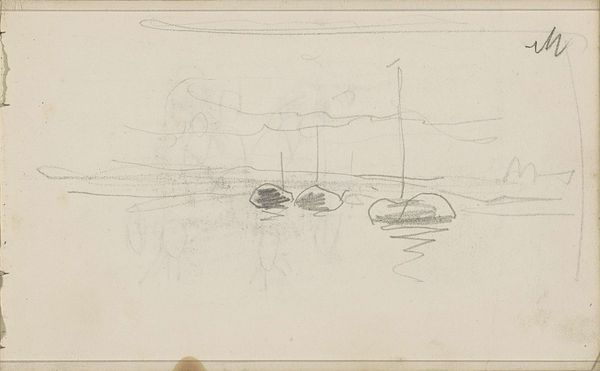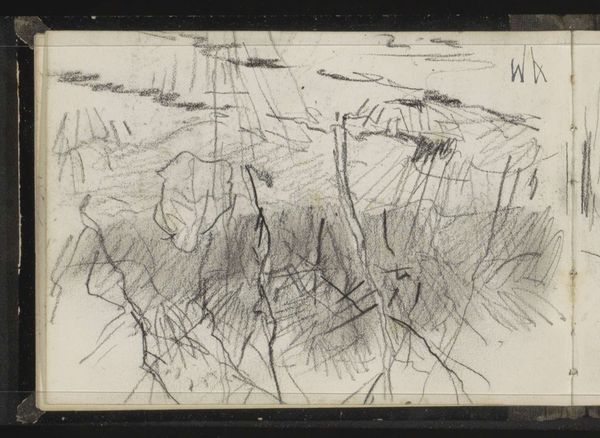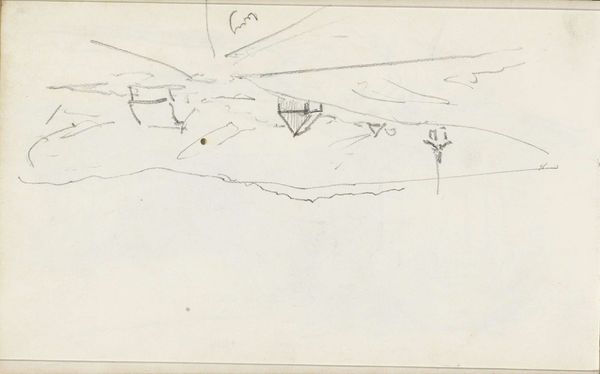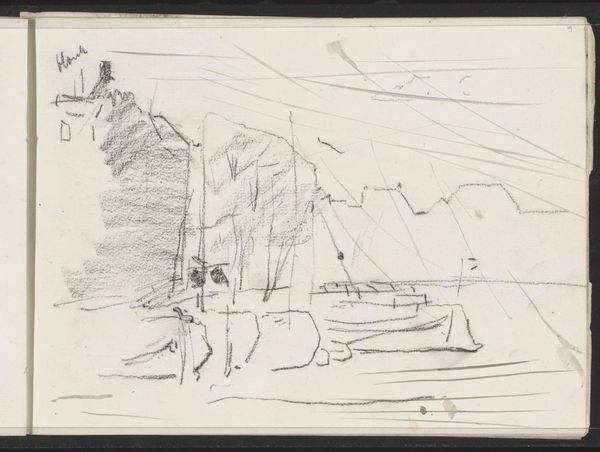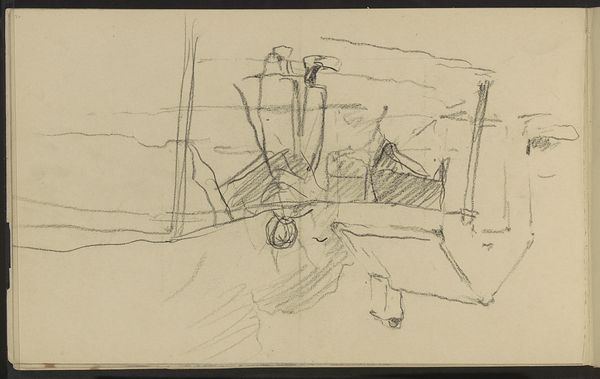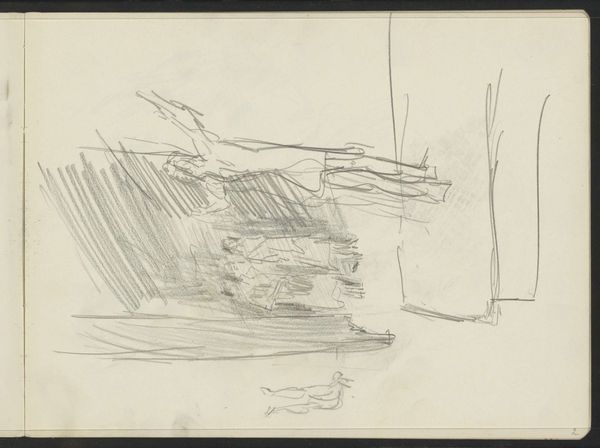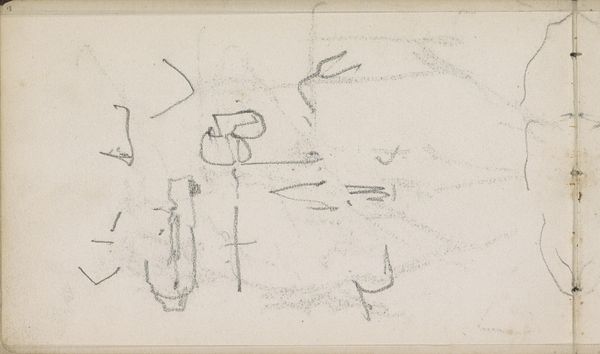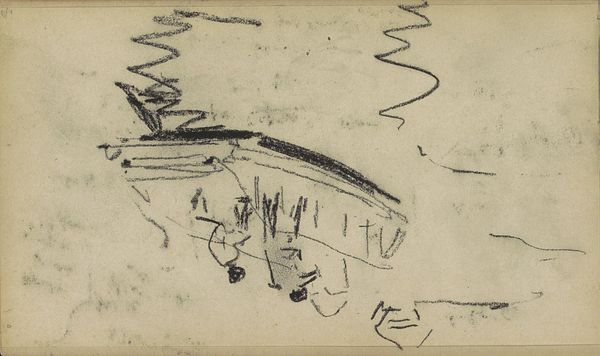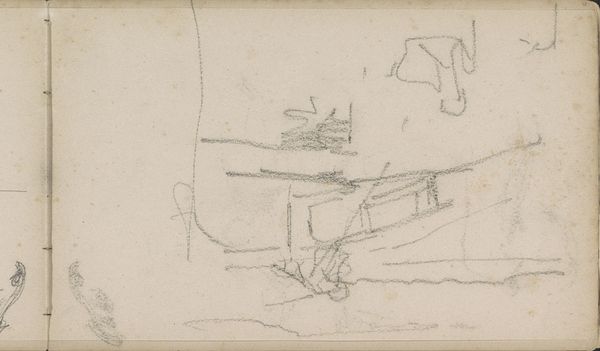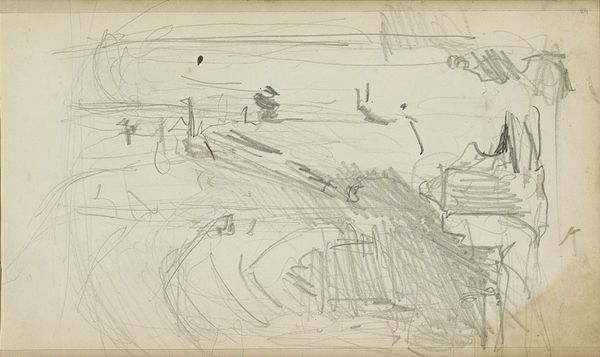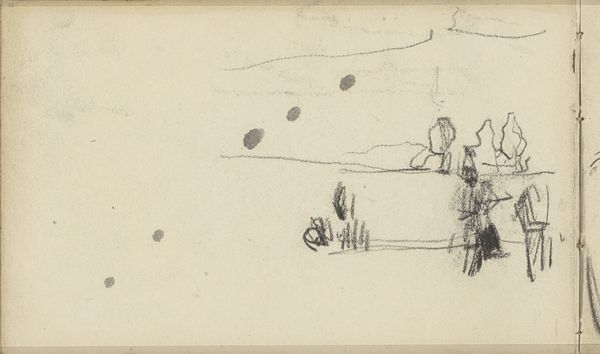
drawing, pencil
#
drawing
#
impressionism
#
landscape
#
pencil
#
realism
Copyright: Rijks Museum: Open Domain
Editor: Here we have "Fishing boats on the beach," a pencil drawing by Anton Mauve, created sometime between 1848 and 1888. There’s a stillness about this quick sketch – a sense of boats paused in time. What stands out to you when you look at it? Curator: The skeletal, almost tentative lines remind me of early cartography, the way coastlines were mapped with an impressionistic sweep before satellite precision. It evokes a world where our understanding is based on glimpses and estimations. The boats themselves, perched on these stilts of lines, suggest a fragile existence, a constant negotiation with the elements. What does the imagery tell you about how the landscape was being viewed at the time, would you say? Editor: I suppose it shows a raw, unvarnished view, not some romantic ideal. Curator: Precisely. There’s an honesty in the sketch, in the utilitarian nature of the boats and the suggestion of hard labor. Consider the use of the pencil; it's a humble tool, mirroring the humble existence of the fishermen. Even the negative space plays a role, the blank paper hinting at the vastness of the sea, an ever-present threat and a provider. The sparseness almost feels Japanese. Editor: That's interesting, I can see that. Curator: Think about what these boats represent. Not just transportation, but survival. This seemingly simple sketch resonates with centuries of human reliance on the sea, its bounty, and its dangers. A direct, personal engagement with the symbolic language of the coast and livelihood. What do you take away from how the work renders depth and the cultural association of 'the sea?' Editor: I'm struck by how much emotion Mauve conveyed with so few lines, like he was sketching memories. Curator: It captures not just the image of boats but echoes the experience of being on the beach, witnessing a way of life.
Comments
No comments
Be the first to comment and join the conversation on the ultimate creative platform.
